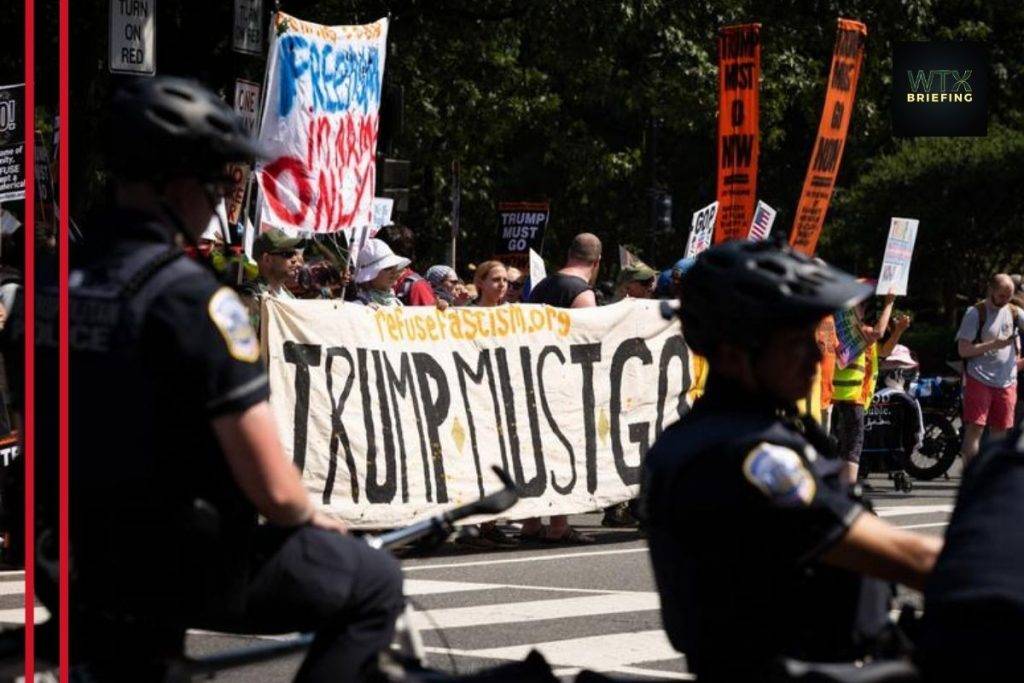Latin American migrants give up on Trump’s United States
Migrants who once braved the Darien Gap, a deadly stretch of dense jungle between Colombia and Panama, on journeys toward the United States are now making the same journey in reverse. The deportation push by US President Donald Trump has left them with no realistic way of making a life in the United States.
These return journeys are mostly invisible. Migrants are untracked, unprotected and exposed to sexual violence, trafficking, exploitation, and a severe lack of food and clean water along the way.
And, in many cases, the places people are returning to remain deeply unstable.
Deportations en masse
According to a survey conducted by the Pew Research Center in June, 23% of Americans worry that they or someone close to them could face deportation. People at risk of deportation include longtime residents, children, families and even visa holders who once believed they were legally protected.
Since beginning his second term, US President Donald Trump has launched what he has described as “the largest domestic deportation operation” in US history. The administration has sent hundreds of deportation flights to Latin America and the Caribbean. Immigration raids have intensified, and a rarely used law from 1798, called the Alien Enemies Act, has been invoked to justify some of the removals.
In February, just weeks into Trump’s term, the International Organization for Migration (IOM) reported a sharp rise in Assisted Voluntary Return (AVR) requests from citizens of countries across Latin America.
Human Rights Watch documented substandard conditions at centers where people scheduled for deportation are held. In one such center in an abandoned factory, detainees could only bathe once every three or four days, and women were reportedly denied the ability to wash themselves during menstruation.
“These are people who were fleeing persecution,” said Michael Garcia Bochenek, the author of the Human Rights Watch report. Out of the 36 people he interviewed, some had even worked for the US government. “Deporting them to countries ill-equipped to protect them is not just irresponsible,” he said. “It’s dangerous.”
Deportation by design
Humanitarian parole is a form of temporary entry granted to individuals in urgent need, such as those fleeing violence or disasters. It allowed thousands of people to live legally in the United States until now.
Melissa Siegel, the chair of the UN University Migration Network, said the US government was allowing humanitarian parole to quietly expire or outright canceling such status, thereby transforming people who were legally present within the United States into targets for deportation overnight.
“It’s not that these people broke the law,” she said. “It’s that the policy changed around them. And now they’re suddenly treated as if they never belonged.”
The result is a growing number of people who were previously documented, but now reside in a state of limbo.
Migration in reverse
The climate of fear isn’t just prompting forced deportations. It’s also driving what experts call reverse migration: people choosing to leave the US and other transit countries, not because they want to, but because they see no other option. Though deportations are carried out by the US government, reverse migration reflects a different kind of displacement, one driven by hopelessness, fear and lack of opportunity.
In many cases, the two are interconnected: US policy has made staying so difficult that many migrants leave “voluntarily,” though the choice is anything but free.
In June, the US Customs and Border Protection agency reported that unauthorised crossings into the United States from Mexico had dropped by 93% in May compared with the same month in 2024. The Darién Gap, the dangerous jungle crossing between Colombia and Panama, saw a 99.7% drop in northward movement toward the United States in April, according to Panamanian President Jose Raul Mulino.
This trend isn’t evidence of safer conditions: It’s a sign of despair. Many migrants, particularly Venezuelans, are returning from the United States, Panama, Costa Rica and Mexico after exhausting their resources.
Returning to what?
In recent years, Venezuela has been the site of the largest emigration wave in Latin America. In January, authoritarian President Nicolas Maduro secured a third term despite widespread evidence of electoral fraud.
The humanitarian toll is already staggering. UNICEF reports that one in three Venezuelans skips at least one meal a day, and 12% go an entire day without food. According to the Legatum Prosperity Index, Venezuela ranks 145th out of 167 countries — only slightly ahead of Haiti, which sits at the very bottom of the Latin America and Caribbean region. Citizens of both countries are now being deported from the United States after their temporary protected status was revoked.
“They’re going back to a bad situation,” Siegel said. “In many cases, the same political instability, poverty and violence that forced them to flee in the first place still exists. Nothing has changed — except US policy.”


